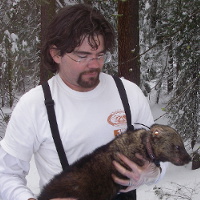The Southern Sierra Nevada Fisher Conservation Strategy provides science-based guidance for conserving and recovering an isolated population of Pacific fisher (Pekania pennanti) in the southern Sierra Nevada (Figure 1) by reducing threats and increasing the quality and resiliency of fisher habitat. The strategy is based on the best available scientific information on fishers and their habitats in the area, as summarized in the Southern Sierra Nevada Fisher Conservation Assessment (Spencer et al. 2015; hereafter, Conservation Assessment). Nevertheless, uncertainties remain concerning the potential effects of fires, climate change, management actions, and other factors on fishers and their habitat. The Strategy must therefore be implemented within an adaptive management framework to allow adjustments as new information accrues from monitoring and other sources. The Strategy should therefore be considered a “living document” that is regularly updated with new information. See Sections 9 and 10 for research and analytical tasks to be implemented in the near future, and the results used to update this Version 1.0 Strategy document and associated data sets and decision-support tools.
The Strategy is intended to meet the needs of multiple agencies with an interest in fisher conservation and land management in the Sierra Nevada, including the USDA Forest Service (USFS), National Park Service (NPS), US Fish and Wildlife Service (USFWS), California Department of Fish and Wildlife (CDFW), Sierra Nevada Conservancy (SNC), and other local, state, federal, tribal, and private entities whose actions may affect fishers or their habitat . As such, the Strategy is intended to be compatible with diverse agency missions, objectives, and legal requirements.
The Strategy was developed to be implemented over about 30 years, after which it should be comprehensively re-evaluated to ensure that the conservation measures remain relevant and effective. Some aspects should be reviewed and updated within the first 2-3 years of implementation to refine methods, guidelines, maps, or other aspects as needed. Thereafter, the Strategy should be updated every 4-6 years to support important agency processes, such as land management plan revisions. Essential datasets (e.g., vegetation, fire, and management data) should be updated regularly as part of the adaptive management process—ideally annually or at least every 5 years.
*Thumbnail photo by Christina Schaefer.



